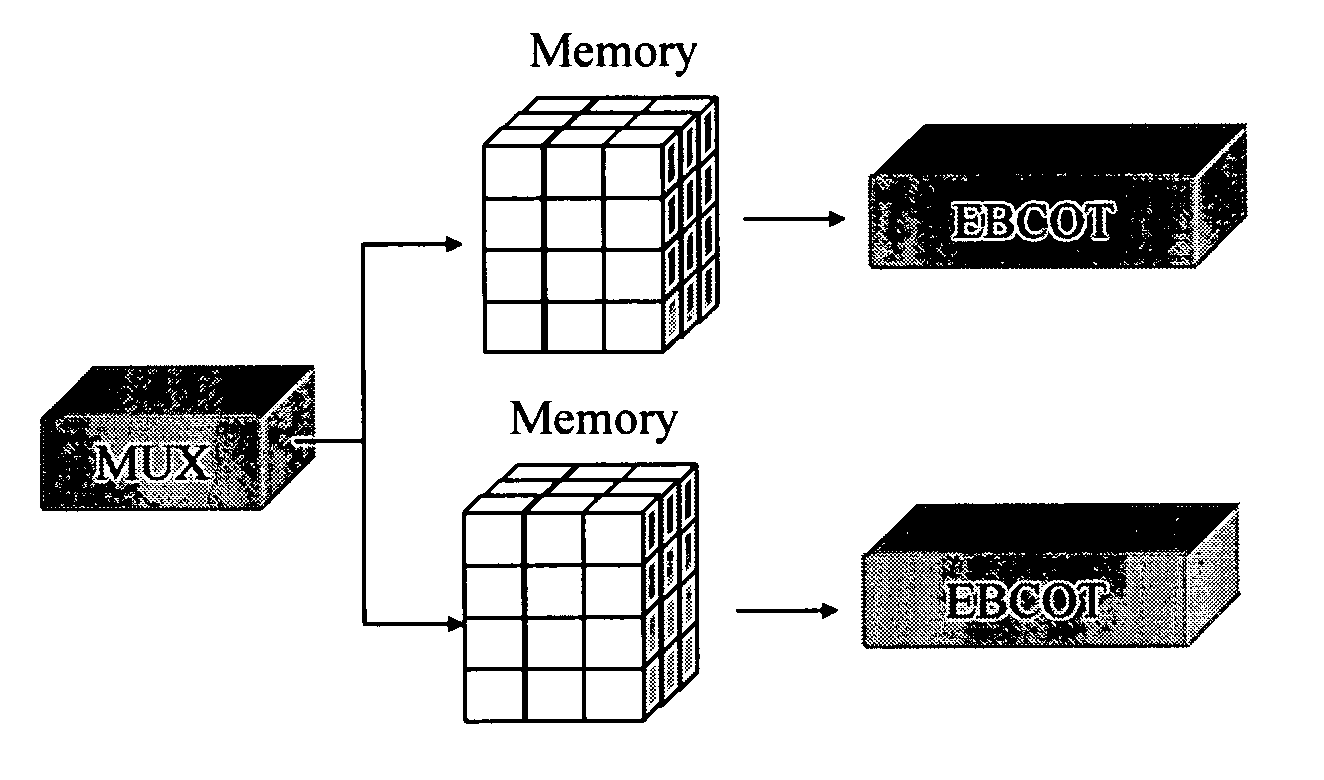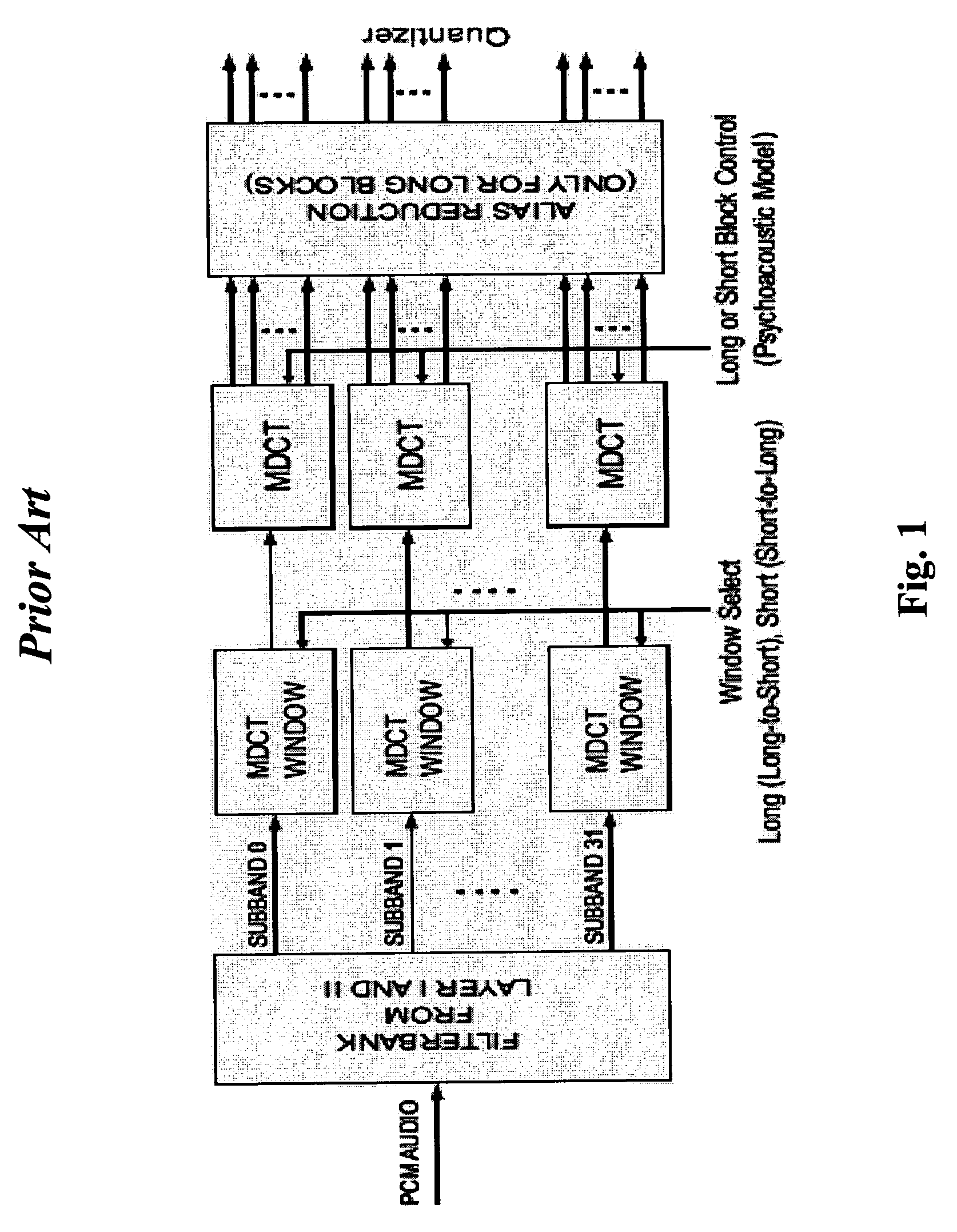System and method for audio data compression and decompression using discrete wavelet transform (DWT)
a discrete wavelet transform and audio data technology, applied in the field of audio data processing (compression & decompression) system, can solve the problems of difficult and inefficient distribution of music over the internet, use lossless formats, and generally difficult to simplify without a (necessarily lossy) conversion, and achieve the effect of less or no latency
- Summary
- Abstract
- Description
- Claims
- Application Information
AI Technical Summary
Benefits of technology
Problems solved by technology
Method used
Image
Examples
Embodiment Construction
[0045]With reference to the figures, like reference characters will be used to indicate like elements throughout the several embodiments and views thereof.
Segment-based Channel Splitting Scheme
[0046]Under a segment-based channel splitting scheme 1000 of the invention as depicted in FIG. 2, analog audio signals are digitalized by an analog to digital converter (ADC) 100, in which the sampling resolution may be set as 8 or 16 bits per sample, and the sampling rate may be set as 44.1, 22.05, 11.025, or 8 KHz (samples / second) for various applications. For processing stereo audio, a channel splitter 200 is used to separate the stereo audio signal segments to pass through either a right channel or a left channel. A stereo audio signal is digitalized in as a sequence as an incoming signal X (. . . . Lk, Rk, . . . L2, R2, L1, R1, L0, R0, where k is the timing index). Every single segment contains N=p2k samples, where p is a non-negative integer, and k is the number of levels in the DWT. The...
PUM
 Login to View More
Login to View More Abstract
Description
Claims
Application Information
 Login to View More
Login to View More - R&D
- Intellectual Property
- Life Sciences
- Materials
- Tech Scout
- Unparalleled Data Quality
- Higher Quality Content
- 60% Fewer Hallucinations
Browse by: Latest US Patents, China's latest patents, Technical Efficacy Thesaurus, Application Domain, Technology Topic, Popular Technical Reports.
© 2025 PatSnap. All rights reserved.Legal|Privacy policy|Modern Slavery Act Transparency Statement|Sitemap|About US| Contact US: help@patsnap.com



